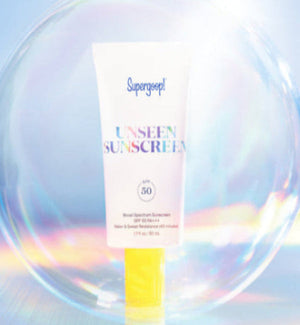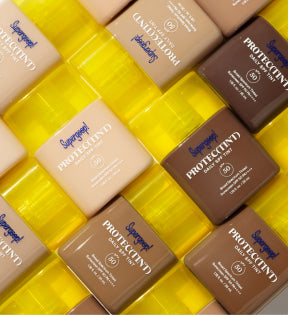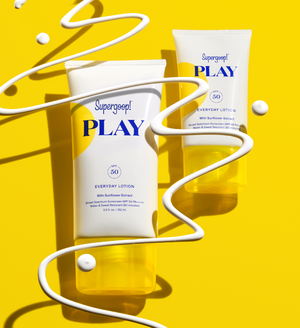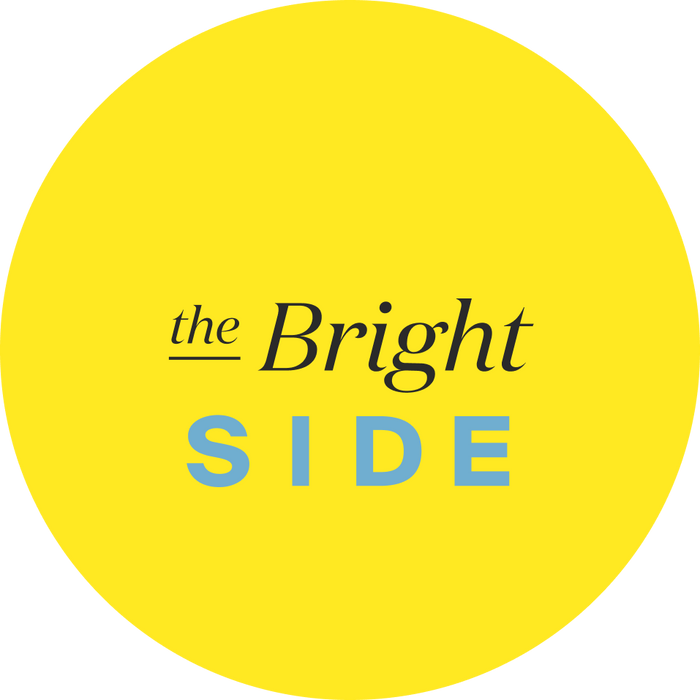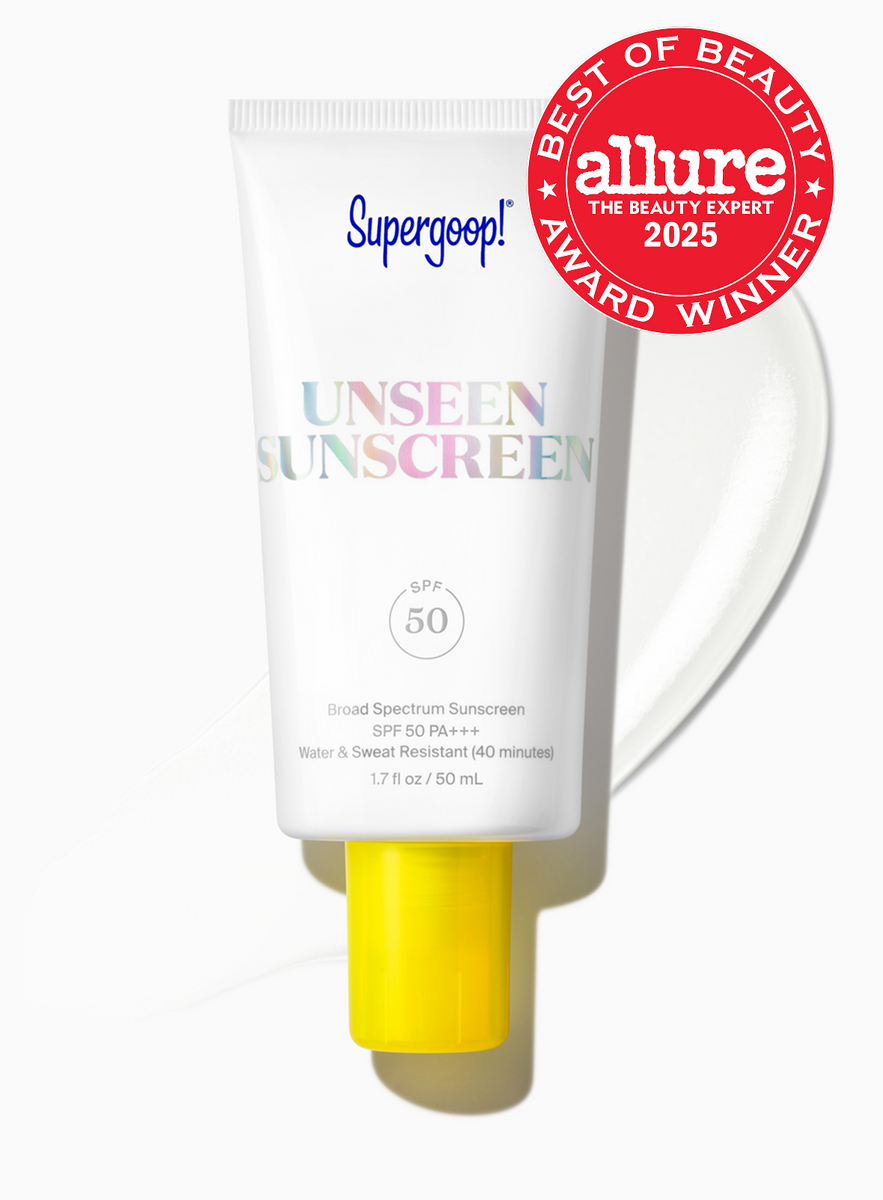There are a lot of buzzworthy ingredients out there that are considered an investment in your skin’s long-term health…including retinol. What is retinol? What are the side effects of retinol? Does retinol help with acne? And most importantly, should you wear retinol and sunscreen? Read on for all the answers…
Walk into any dermatologist’s office, and chances are they’ll recommend two products over everything else: retinol and sunscreen.
Since up to 90% of the visible signs of skin aging are caused by the sun, it makes sense that SPF is the ultimate go-to for healthier-looking skin now and in the future. As for retinol, many dermatologists consider it a gold-standard anti-aging ingredient because it can reduce the appearance of fine lines, wrinkles and dark spots.
If only it were as simple as applying retinol and then going on your merry way. This ingredient, as wonderful as it is, comes with a few ground rules — especially when it comes to sun exposure. Today we’re discussing what retinol is, how it works, the correct way to use it and why SPF is a non-negotiable when retinol is part of your routine.
The lowdown on topical retinoids
Firstly, it's important to understand that retinoids are a class of chemicals derived from vitamin A, and both retinol and retinoic acid fall underneath the retinoid umbrella.
Retinol is what you find in over-the-counter formulations. When applied to the skin, retinol undergoes a chemical transformation that turns it into retinoic acid, which is the active ingredient that does all the anti-aging magic. Doctors can prescribe straight retinoic acid, which has already undergone that chemical transformation and is therefore much more potent.
“While retinoids can help increase cell turnover, their true benefit is much more complex. They actually work at the cellular level to increase collagen production, decrease collagen breakdown, and help improve general tone and texture,” explains Rosalyn George, MD, a board-certified dermatologist at Wilmington Dermatology Center.
With consistent use, people can see a more even complexion, fewer fine lines and wrinkles, and even clearer skin since retinoids can also help with acne.
When and how to use retinol in your skincare regimen
Even over-the-counter retinols can be pretty potent, so it’s important to slowly introduce this ingredient into your regimen.
“Retinol should be applied every other night and very gradually be increased as your skin builds a tolerance for it. It may take up to eight to 12 weeks for the benefits to truly become visible,” notes Jeannel Astarita, aesthetician and founder of the NYC-based skincare studio Just Ageless.
She says that when you first begin using retinol, you may experience redness, sensitivity and peeling which is a direct result of cell turnover. This is expected and normal. If you experience a lot of sensitivity, reduce your dosage and then work up from there. Over time, your skin will become accustomed to the ingredient and won’t react as strongly.
As Astarita mentioned, you can slowly increase quantities or potencies as your skin adapts.
Why retinol and sunscreen should always go together
If you’re putting both time and money towards retinol, you’ll want to protect that investment. The two ways to do so are to 1) apply it in the evening and to 2) wear lots of sunscreen during the day.
“Nighttime use tends to be best, primarily because there is often a period of irritation associated with retinol use. Applying it as part of your nighttime routine gives your face a chance to recover while you sleep,” says Astarita. “More importantly, it helps you avoid sun exposure immediately after application. Sun exposure breaks down the retinoid structure and greatly reduces its effectiveness.”
Even if you apply retinol at night, it’s absolutely critical to apply sunscreen in the morning. Not only does wearing sunscreen help maintain the efficacy of your topical retinoids, but it also provides much-needed protection from the sun.
“The way retinol works is by accelerating the formation of new skin cells to replace the old, damaged skin. This new skin can be more sensitive and is more prone to sunburn, so it’s extremely important to add facial sunscreen to your morning routine if it’s not already part of it,” says Astarita.
Luckily, we've created plenty of SPF skincare products you can easily incorporate into your morning skincare routine, like:
- Triple Prep Weightless Multitasking Moisturizer SPF 40, a lightweight face moisturizer that hydrates skin, offers expert sun protection, and supports the moisture barrier.
- Unseen Sunscreen SPF 40, the original 100% invisible, weightless and scentless sunscreen that's perfect for all skin tones and doubles as a makeup-gripping primer.
- Protec(tint) SPF 50, our viral skin tint that gives you light, buildable coverage and a high level of sun protection in one.
- (Re)setting 100% Mineral Powder SPF 35, a setting powder that locks your look in place, mattifies shine and can be used throughout the day to reapply your sun protection over makeup.
Final thoughts:
“Retinol can be an integral part of any great skincare routine, and we are fortunate to have so many vehicles to choose from, such as gels, creams, serums and more,” George says. “There are even new, time-released options that can make it easy for almost anyone to tolerate a retinoid.” So, as retinoids continue to grow in popularity, don’t forget to Protect Your Investment® by applying broad spectrum SPF daily!



















